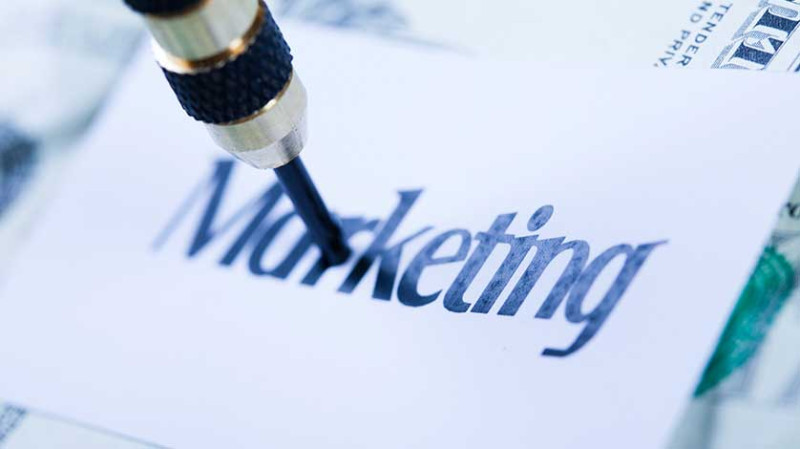
As we head into 2025, marketing for small businesses in the UK is rapidly evolving. With changing consumer behaviour, increased digital adoption, and new technologies emerging, now is the time for businesses—whether you're a tradesman, an interior designer, or a DIY enthusiast running your own shop—to fine-tune your marketing strategy. Whether you’re based in Manchester or Milton Keynes, staying ahead of your competitors means understanding and embracing the latest marketing strategies tailored for modern consumers.
This guide is focused on practical, proven, and powerful marketing strategies designed for small businesses in the home renovation, design, and construction industries. Whether you're targeting young professionals redecorating their flats or industry professionals working on residential projects, these insights will help you generate more visibility, sales, and customer loyalty in 2025 and beyond.
1. Build a Mobile-Optimised Website with Clear Calls to Action
Your website is your digital storefront, and in 2025, mobile-first web design is no longer optional—it's essential. UK consumers increasingly research, browse, and buy via their smartphones. A clunky, outdated, or slow website will cost you enquiries, sales, and trust.
Your website should load in under 3 seconds and feature intuitive navigation, bold visuals (especially before-and-after renovation photos if you’re a tradesperson or designer), and clearly marked calls to action like “Request a Quote”, “Buy Now”, or “Book a Free Consultation”.
Small businesses should also ensure their content is accessible, with headings that reflect common keywords and helpful information structured for ease of use. Don’t forget to integrate tools like WhatsApp web chat or quick enquiry forms—these increase immediate interaction rates significantly.
If you’re selling products, investing in e-commerce functionality or integration with platforms like Shopify or WooCommerce could supercharge your sales.
2. Strengthen Local SEO and Google Business Profile
Most home service-related searches in the UK include a geographic element like “plumber in Brighton” or “kitchen fitter near me”. To get visibility in local search results, you must optimise for local SEO.
Start with claiming and fully populating your Google Business Profile (formerly Google My Business). Add accurate contact information, opening hours, product or service categories, photos, and encourage happy clients to leave 5-star reviews.
Ensure your website includes your service areas and key local phrases. Blogs about “Best Paint Colours for Small London Flats” or “Loft Conversion Tips for Victorian Homes in Bristol” can attract highly targeted traffic.
Use structured data (schema markup) to help Google understand your business and location in more detail. Adding a location map, testimonials, and case studies from real clients in your area also helps build trust and rankings.
3. Leverage the Power of Content Marketing
Creating helpful content not only boosts your SEO but builds trust with your audience. Blogs, how-to guides, videos, and infographics educate your prospects while highlighting your expertise— which is crucial for designers, tradespeople, and retailers alike.
Think of your ideal customer in 2025—a millennial couple buying their first home outside London, looking to redecorate sustainably and affordably. What kind of questions are they Googling? Topics such as “Eco-Friendly Paint: The Best Choices for 2025” or “DIY vs. Hiring a Builder for Your Kitchen Extension” would engage them and position your brand as a helpful expert.
Build out ongoing content themes around seasonal updates, new regulations, emerging trends (such as smart home integration or minimalist design), and local housing developments. Repurpose each piece into an email newsletter, social post, or YouTube video to maximise ROI on your content investment.
4. Run Highly Targeted Social Media Campaigns
Social media is still one of the most cost-effective ways for small businesses to reach and nurture their audience in 2025. However, the key is targeting—not just blasting your posts to everyone.
Use the precision targeting tools of platforms like Facebook and Instagram to reach users based on their location, job role (e.g., architects or property developers), interests (DIY, home design), and even their behaviours (first-time buyers or parents).
Promoted posts showcasing your finished projects, client testimonials, or time-lapse renovation videos can drive huge engagement. Carousel ads are particularly effective for tradespeople and interior designers: show multiple stages of a transformation or product features in succession.
Don’t underestimate TikTok and YouTube Shorts either—short-form video is exploding, and a well-filmed time-lapse of a bathroom renovation or quirky design tip can gain thousands of views overnight.
5. Offer Downloadable Guides and Free Tools
Lead generation is crucial—whether you’re a builder wanting to grow your client list or a tile showroom looking to attract new designers. Offering downloadable tools and resources can help.
Guides like “10 Renovation Mistakes to Avoid in 2025” or “The Ultimate Colour Matching Cheat Sheet for Kitchens” can be offered in exchange for an email address on your site. Use these emails for ongoing newsletter campaigns, product announcements, or follow-ups.
Tools such as cost calculators, project estimators, or product selectors are also powerful for capturing leads while adding real value. Keep them simple and mobile-friendly—it’s all about usability.
6. Collaborate with Complementary Local Businesses
Collaboration can unlock exponential growth for small businesses. Consider partnering with other professionals serving similar audiences—you’ll cross-pollinate audiences while enhancing your brand credibility.
For example, if you’re a paint supplier, partner with local decorators and interior designers for a “Colour Trend Report” or an open studio day. If you sell high-end fixtures, work with eco-home builders for a joint content series or a pop-up installation event.
Use joint email campaigns, co-branded brochures, and reciprocal social media promotion to maximise exposure. Not only does this tap into each other’s networks, it also builds vital referral-based trust that UK consumers value highly.
7. Invest in Paid Digital Advertising Strategically
PPC (Pay-Per-Click) advertising on Google, Bing, and social media remains one of the fastest ways to scale your visibility and attract qualified leads. But in 2025, it must be done wisely—blindly throwing money at ads rarely works.
Use location-based keyword targeting with high purchase intent—for example, “bathroom renovation Camden” or “London commercial tiler”. Combine Google Search ads with retargeting display banners: once someone visits your website, show them follow-up visuals featuring recent projects or time-limited offers.
Social ads should promote specific, action-driven content. For instance, a downloadable “2025 Builder’s Guide to Planning Regulations” gatekept behind a lead form could drive dozens of highly qualified leads a month, especially among architects or designers dealing with Housing Association constraints or new builds.
8. Track and Optimise With Analytics
Effective marketing in 2025 means data-led decision-making. Simply posting content and running ads isn’t enough—you need to know what’s working and what’s not.
Ensure Google Analytics 4 (GA4) is properly installed on your site, with conversions—like contact form submissions or quote requests—configured as goals. Connect your site to Google Search Console to identify high-potential keywords, and use tools like SEMrush or Ubersuggest to monitor competitor campaigns.
Social media platforms offer built-in analytics as well. Track engagement, click-throughs, and comment sentiment regularly to spot trends and adjust your content accordingly.
Set aside time every month to review your marketing data and revise strategies—this is how you’ll grow faster and stay lean.
Conclusion: Adapt, Experiment, and Stay Human
Marketing for small businesses in industries like home renovation, architecture, product supply, and creative trades in the UK is changing quickly—and 2025 will continue to challenge and excite small business owners.
By staying flexible with your approach, focusing on your ideal customer, leveraging digital tools, and putting your story and expertise at the centre of your brand, you can stand out from the crowd—even if it’s crowded.
Experiment with new tactics, double down on what’s working, and always remember that in an industry as people-driven as home design and trades, being relatable, reliable, and authentic is your greatest asset.
The future of small business marketing in 2025? It’s smart. It’s local. And it’s made for people like you.





